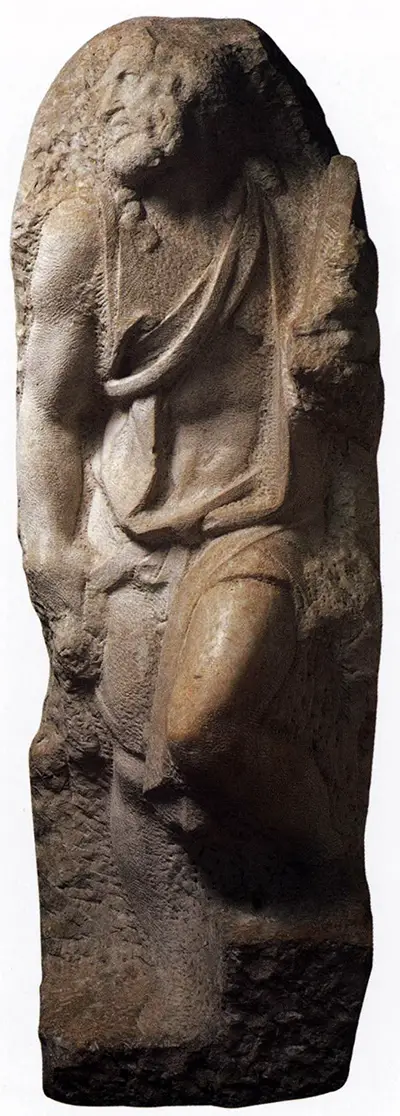St Matthew was the only one started and the project was abandoned early in 1506 when Michelangelo was summoned to Rome. Today it can be seen in the Galleria dell'Accademia in Florence, along with other examples of the artist's work.
Michelangelo di Lodovico Buonarroti Simoniis (1475-1564) was one of the most famous artists and sculptors of the sixteenth century and his work was prominent both during his lifetime and after his death. His most famous work is usually considered to be the ceiling of the Sistine Chapel in the Vatican which attracts countless visitors each year. However, Michaelangelo saw himself as a sculptor rather than a painter.
Of his sculptures the most famous are the Pieta which can be seen in Saint Peter's Basilica in Rome and David, which like St Matthew can be seen in the Galleria dell’Accademia. He was only twenty-one years old when he started work on David and it must have been as he was creating this masterpiece that he received the commission for the twelve marble apostles for Florence Cathedral.
The Apostles is the name given to twelve disciples of Christ who, in Christian belief, were trained by him to spread his message after his death. Not much is known about the life of St Matthew. He is believed to have come from Galilee and worked as a tax collector until he was requested by Christ to follow him. He is best known as the writer of the first Gospel and it may be for this reason that Michelangelo chose to start his group of Apostles with him.
The Twelve Apostles were commissioned in 1603, but it was not until twenty months later before Michelangelo started work on St Matthew. He may have created drawings for all twelve of the sculptures, but only one of these survives. After some months working on the sculpture of St Matthew, the figure took shape as if struggling to emerge from the marble. The effect of movement inherent in the sculpture makes it very different in pose to David.
While it was probably hoped that such a commission would keep Michelangelo in Florence for some time while he worked on these statues, the work remained unfinished. In 1506 Michelangelo received a commission from Pope Julius II to sculpt forty statues for his tomb. He left Florence with his twelve Apostles barely begun.
Today St Matthew and other unfinished works such as The Slaves are fascinating to art historians and students in the hope they will offer a glimpse into the technique of the great master. Exactly how Michelangelo carved is shrouded in secrecy.
He disliked anyone watching him as he worked, saying they made him nervous. His friend and biographer Giorgio Vasari recounted a story of how he arrived one night to find Michelangelo working by candlelight, but upon seeing him he quickly snuffed out the flames, plunging the room into darkness. He found this amusing, but for many others the lack of knowledge on Michelangelo's technique is frustrating.
However, unfinished pieces like St Matthew give rise to as many questions as they provide answers. The figure of St Matthew seems to be emerging from the stone, giving an appearance of a relief rather than a statue similar to David. It is possible that Michelangelo was carving in a different style and that the unfinished, relief like nature of the sculpture was intentional. But it may be that this was part of his mysterious method and if he had finished it may have produced a work as admired as David or the Pieta. If they had been completed St Matthew and the other Apostles would have been placed with their backs to the walls, so with no one likely to see them it is possible that Michelangelo preferred to concentrate initially on the parts which would be commonly seen.
As one of the great renaissance artists, Michelangelo has inspired many painters and sculptors across the generations. The influence of St Matthew and his other unfinished pieces can most clearly be seen in the 19th-century sculptor Auguste Rodin, who also made use of the effect of an unfinished block of marble. What Michelangelo himself thought of the unfinished sculpture of St Matthew is unknown, but he did write a sonnet lamenting how hard it was to draw out a figure in perfection from the marble block which housed it. Was he referring to those works he did not have time to complete to the standards he drove himself to? It certainly seems possible.


